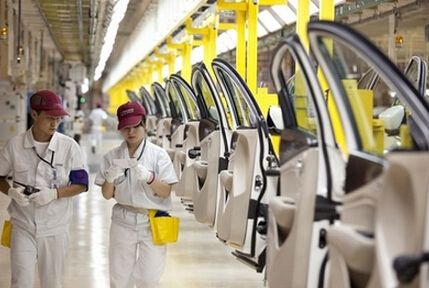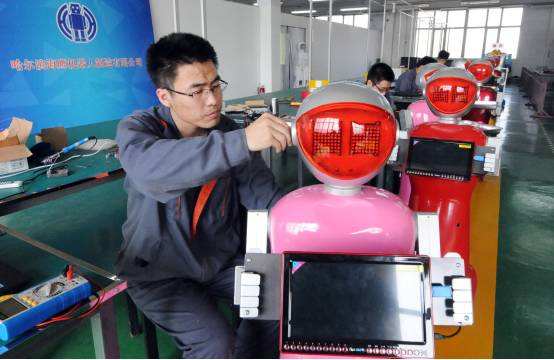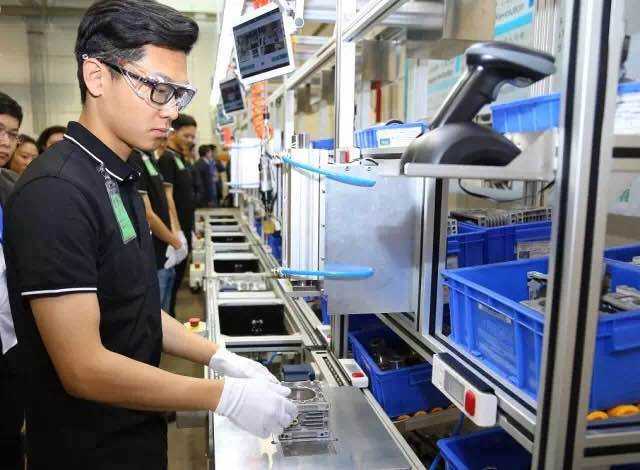ã€Worldwide report】 The latest research report from McKinsey, a global management consulting firm, shows that although Chinese manufacturing companies generally have an optimistic view of future opportunities brought by Industry 4.0, only 57% of them believe that they are ready. Only 6% of Chinese companies interviewed have a clear road map.

According to McKinsey, Industry 4.0 includes four broad-based subversions: increase in data availability and intrinsic connections; analysis and business intelligence capabilities (such as artificial intelligence); human-machine interactions (such as collaborative robots), that is, collaboration in the workplace. Cooperative robots); advanced production methods (such as 3D printing, 4d printing). From customer orders to after-sales services, these technologies will change the entire life cycle of commercial products.
As a world factory, China produces 70% of the world's mobile phones, 80% of air conditioners and 91% of personal computers, but its manufacturing productivity is still only a quarter of that of developed countries. In order to transfer the country from a manufacturing workshop to a leading innovator, Premier Li Keqiang launched "Made in China 2025" two years ago.
Although China has actively participated in high-tech research and development in recent years, such as 3D printing, big data and VR, McKinsey pointed out in the report that most participants are small start-ups or branches of research institutions, and the market is still dominated by multinational companies. .
“Digitalization is more than just buying and installing advanced automation equipment.†McKinsey partner Arthur said at a press conference last Friday that the company’s organizational structure, management talent and philosophy are all important.
The report shows that Chinese manufacturing companies are not fully prepared for Industry 4.0, and only 57% of Chinese companies believe that they are ready, lower than US companies (71%) and German companies (68%). Among them, only 44% of China's state-owned enterprises consider themselves ready.
The lack of relevant preparations is reflected in the lack of a clear assignment of responsibilities and a clear roadmap for the digital transformation program of enterprises.

According to the McKinsey survey, only 9% of Chinese respondents believe that their companies have a clear allocation of responsibility for Industry 4.0, and only 6% have a clear road map. At present, 30%-40% of Chinese companies have low operational efficiency, weak lean production base, and lack of automation. They are in a “lagging behind†phase. While 50%-60% of Chinese companies have achieved semi-automation and data collection, they lack digital management. Ability, in the "followers" stage. Only less than 5% of Chinese companies are actively innovating their business models and adopting advanced digital technologies. They are located in the "forerunners" such as Haier, Lenovo, and Huawei.
McKinsey said that Chinese companies do not need the "all-you-can-eat" Industrial 4.0 solution but a tailor-made road map. In addition, excessive enthusiasm for Industry 4.0 may lead to irrational investment in equipment and tools, as well as waste of resources.
To help Chinese manufacturing companies better adapt to the digital transformation, McKinsey and Tsinghua University established the Digital Capability Development Center. This is the fifth digital capability development center after the United States, Germany, Italy and Singapore. Put into use.

It is understood that the digital development center put into use this time consists of an exemplary factory and a digital technology exhibition hall. The center aims to provide a ready-to-use venue for companies to test water digital technology, and also provides experiential training courses for managers at different levels of the company.
Wang Ping, a global managing partner of McKinsey & Company, stated that the Beijing Digital Capability Development Center, tailored for Chinese companies, is unique in that it integrates technology display, training and innovative solutions. Here, companies can quickly learn how to apply digital operations and smart manufacturing, and see for themselves the dramatic increase in innovation and efficiency.
A waterproof slip ring is a type of sealant that can be used to create a watertight seal between two surfaces. This seal can be used in a variety of applications, including plumbing and automotive manufacturing. Waterproof slip rings are often used in conjunction with other types of seals to create a watertight system. It enables liquid and gas to flow freely between the two, without any leakage. This essential technology is used in a variety of industries, from automotive manufacturing to food processing.
Waterproof slip rings are mainly made of silicone rubber. They can be used in harsh environments and have a long life span. Silicon is an inert material and does not corrode in water or other liquids. It also has a low coefficient of friction, which makes it ideal for use in moving parts. Slip ring motors are typically used in high-power applications where large amounts of the current need to be transmitted. They are made of copper or aluminum to provide good electrical conductivity.
The Oubaibo waterproof slip ring is very popular on the market. It is made of high-quality materials and has a long lifespan. The slip ring is also very easy to use, and it can be connected to a wide range of devices. Additionally, the slip ring is Ethernet-enabled, which makes it perfect for industrial applications.
Waterproof Slip Ring,Slip Ring Motor Application,Electrical Slip Rings Industrial,Slip Rings Ethernet
Dongguan Oubaibo Technology Co., Ltd. , https://www.sliprobo.com